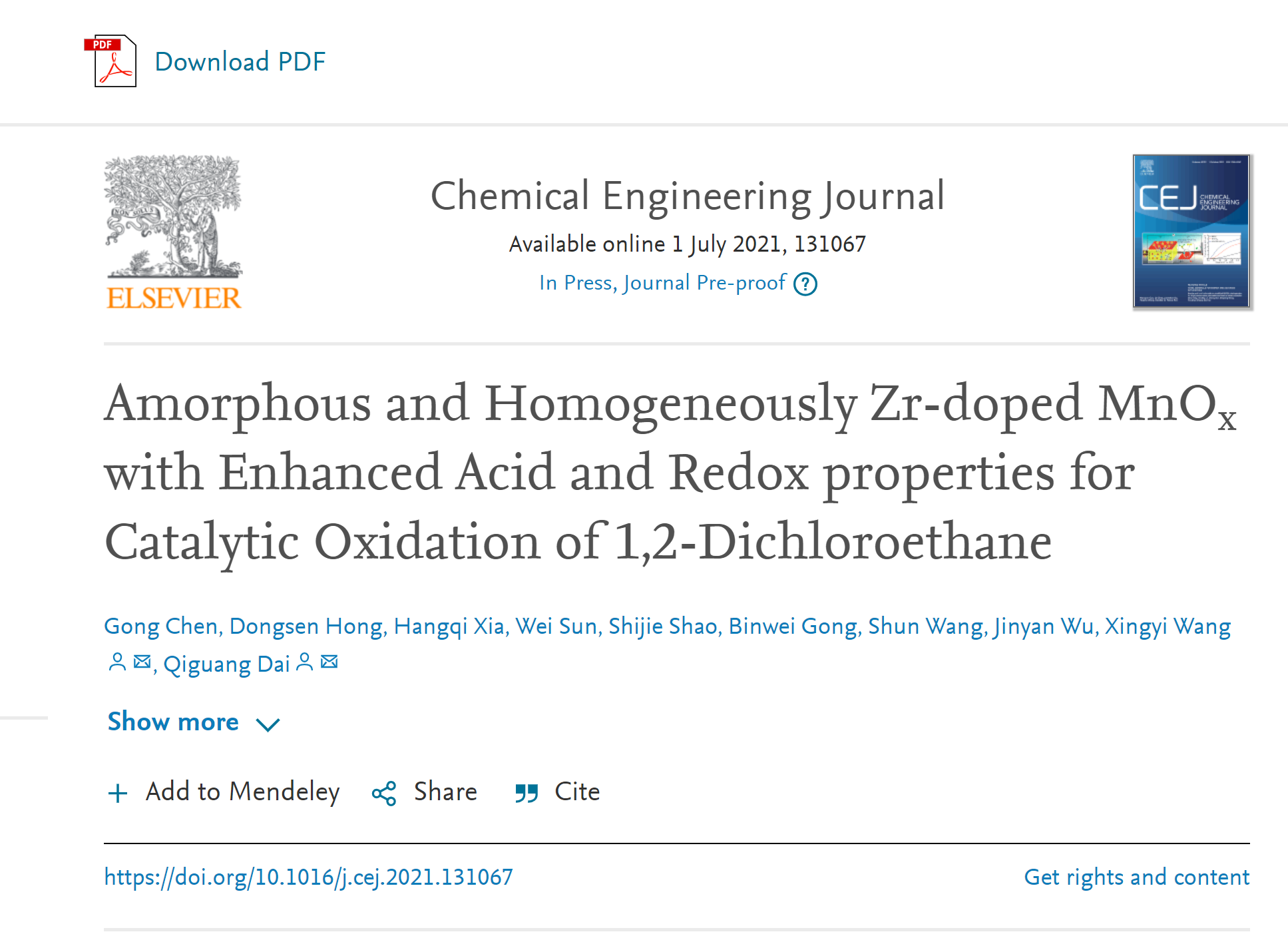博文
【华理戴启广&王幸宜】Zr均相掺杂的无定形MnOx上二氯乙烷催化燃烧
||
Amorphous and Homogeneously Zr-doped MnOx with Enhanced Acid and Redox properties for Catalytic Oxidation of 1,2-Dichloroethane
https://www.sciencedirect.com/science/article/pii/S1385894721026498

Abstract
Series of MnOx based catalysts were prepared and investigated for 1,2-dichloroethane (1,2-DCE) oxidation. R-ZrMn prepared by a novel reflux method presented an amorphous structure and homogeneous dispersion of Zr, which prominently enhanced acid and redox properties, such as more surface oxygen species and vacancies (OAds/OLatt = 0.53), better reducibility, severer Jahn-Teller distortion, more total acid amount (396 μmol·g-1) and Brønsted acid sites. Compared with the pristine MnOx and ZrO2, R-ZrMn exhibited a better catalytic activity for 1,2-DCE oxidation (T90 = 287 °C and the reaction rate at 150 °C was 5.13 μmol min-1·g-1), less formation of chlorinated by-products, high durability and resistance-H2O. Catalytic oxidation of 1,2-DCE and the formation of chlorinated by-products on MnOx based catalysts was typically represented as a synergistic catalysis process of acid and redox sites, and a positive relationship between total acid amount or OAds/OLatt and reaction rate of 1,2-DCE oxidation was clearly observed. Meanwhile, a possible mechanism and formation pathway were proposed.
Highlights
1. Amorphous and homogeneous Zr-Mn binary oxide was prepared by a novel reflux method.
2. The introduction of Zr significantly promoted the redox and acidity properties of MnOx.
3. Zr-Mn binary oxide exhibited high activity, stability and H2O-tolerance for 1,2-DCE oxidation.
4. Structure distortion and balanced acid-redox determined 1,2-DCE oxidation and by-products formation.



https://blog.sciencenet.cn/blog-3913-1293713.html
上一篇:[转载]2021年环境类期刊最新影响因子(JCR2020-IF):附完整版2021年影响因子(2020JCR-IF)
下一篇:Advanced Powder Materials (APM)即将上线!